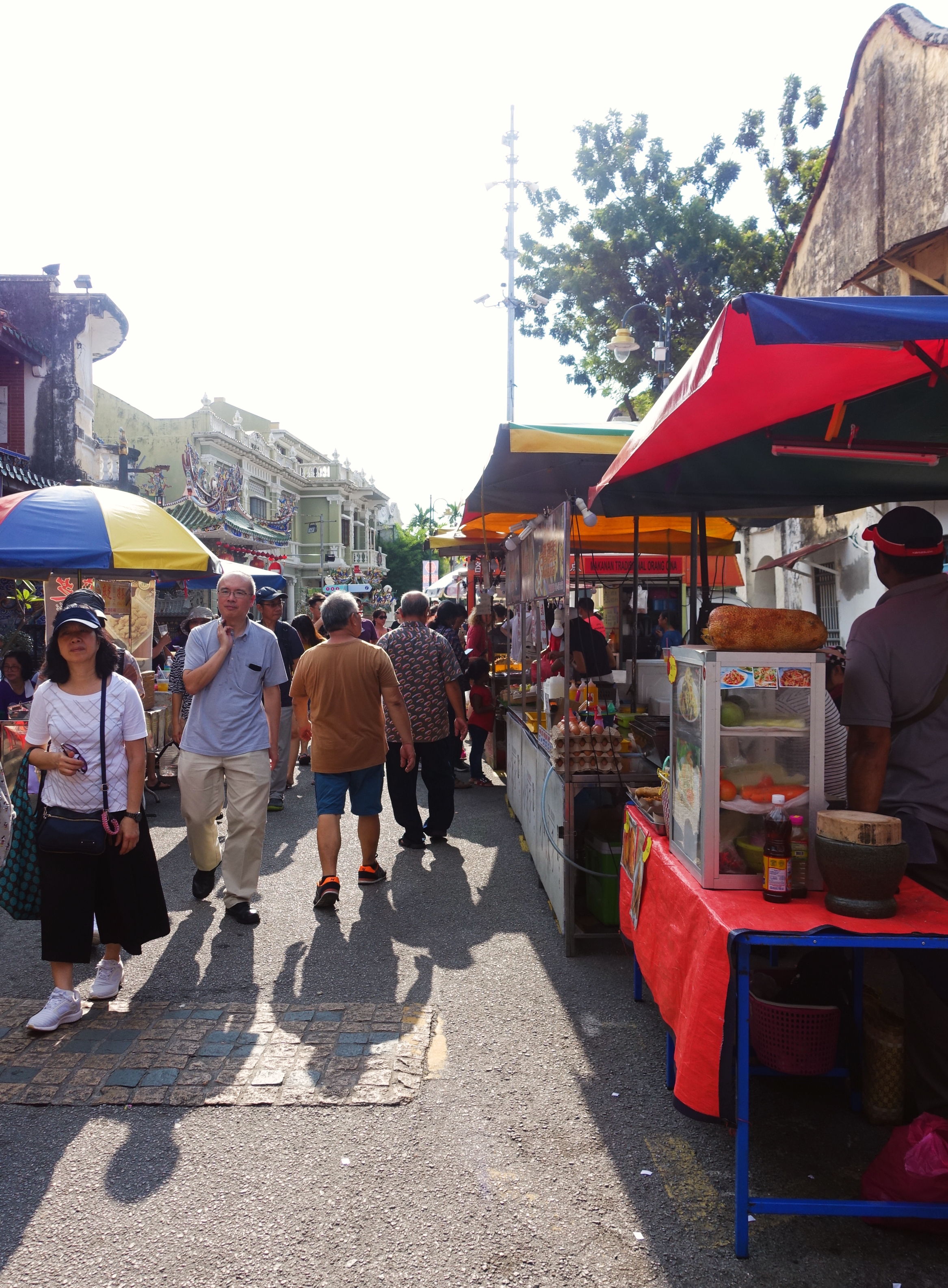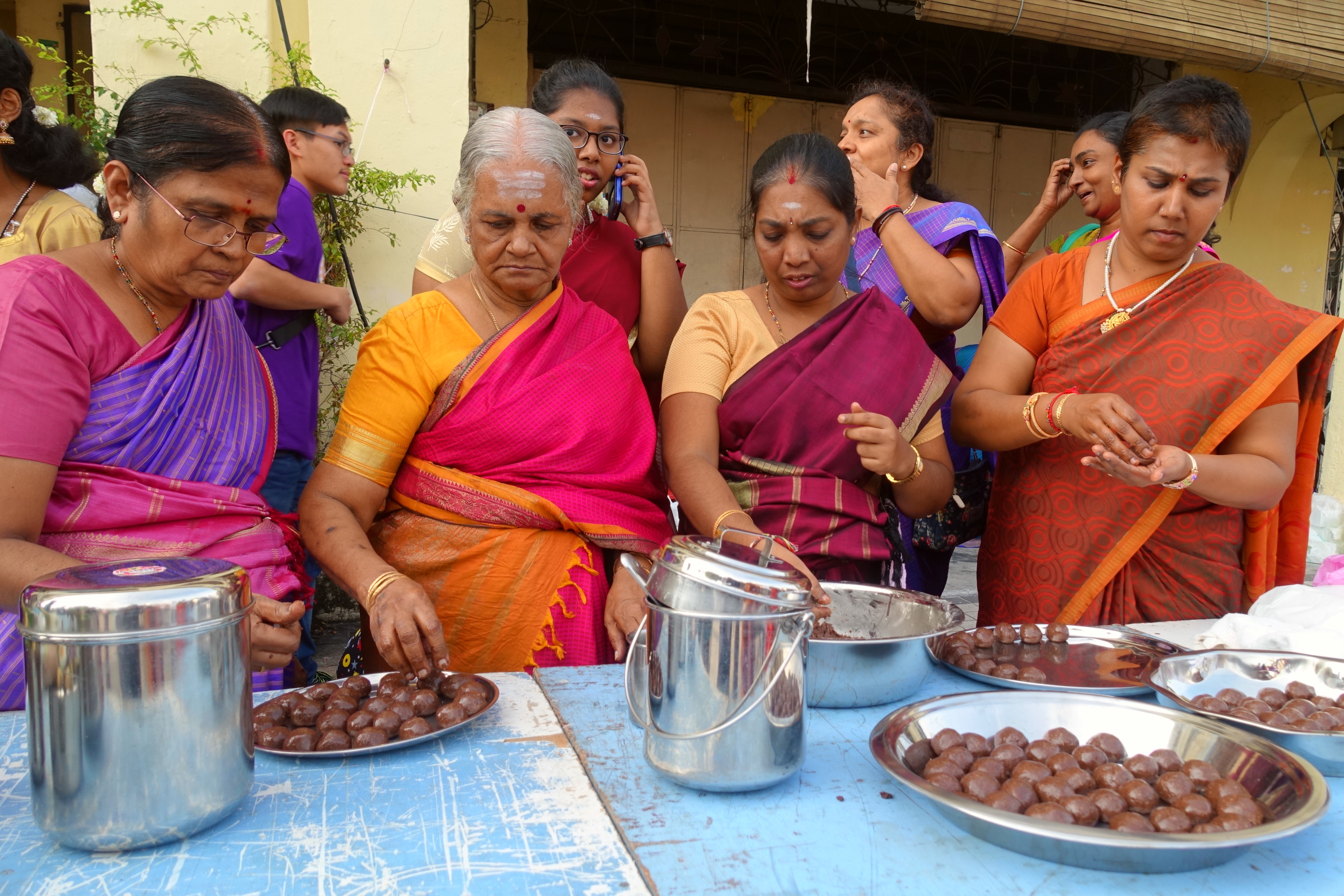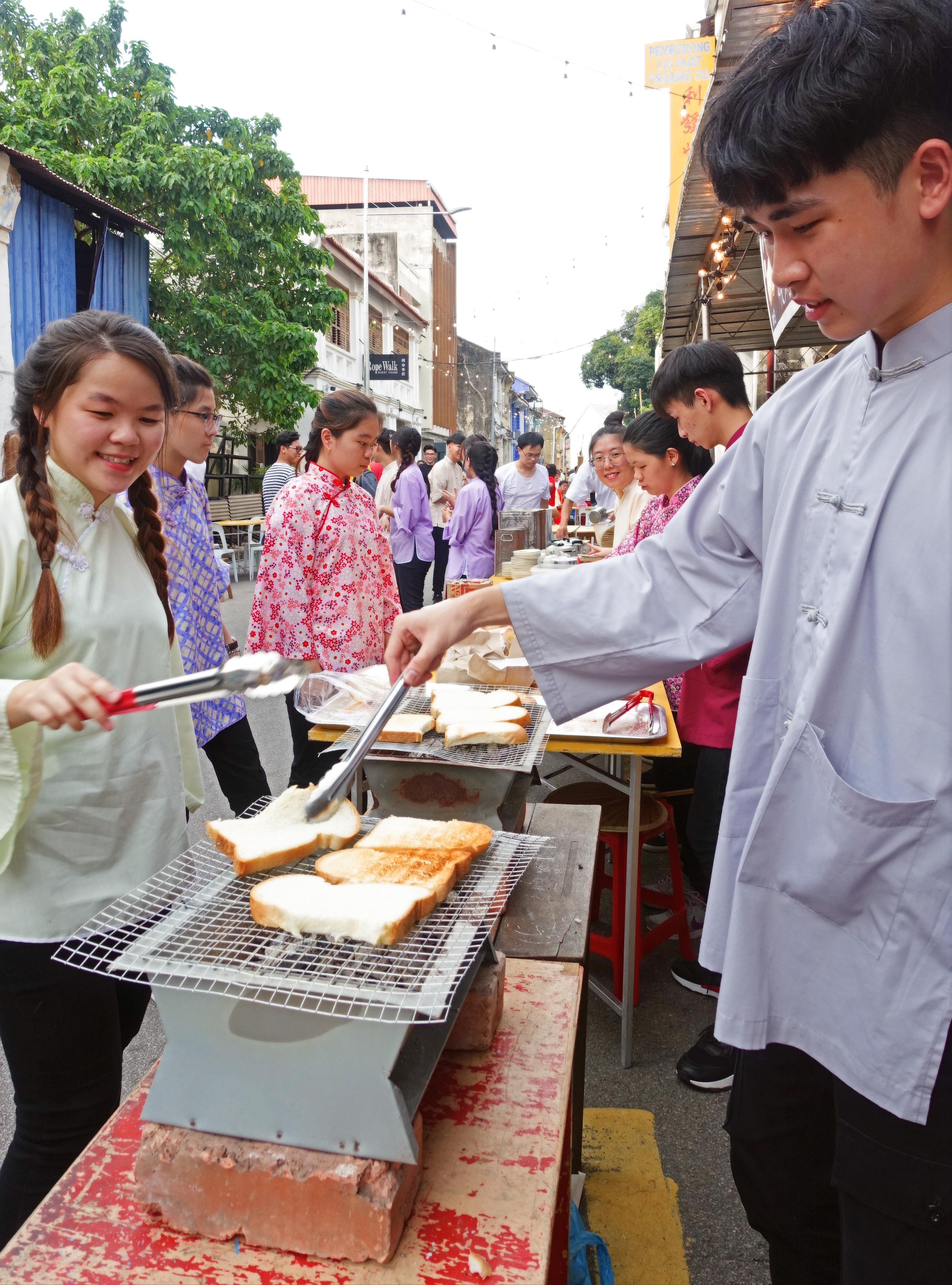George Town, the state capital of Penang, celebrated Heritage Day last Sunday, July 7, to commemorate its certification by UNESCO as a World Heritage site. Founded by British East India Company’s Captain Francis Light in 1786, George Town’s unique character was drawn from a rich, cosmopolitan mix of various ethnic groups, from Chinese (Hokkien/Fujianese, Teochew/Chaozhou, Cantonese, Hakka, Hainanese, Foochow/Fuzhou, Shanghainese, etc.), Indian (Tamil, Malayalee, Telugu, Gujerati, Bengali, Punjabi. etc.), Malay/Indonesian, Portuguese-Eurasians, etc. George Town celebrates its Heritage Day with a colourful mix of cultural street demonstrations, dances and, my fave part: the food from its diverse mix of communities.
Street food stalls along Armenian Street. In the early days of George Town, a large Armenian community lived here, founding businesses including the Eastern & Oriental Hotel by the Sarkies brothers. They later went to Singapore and founded the Raffles Hotel.
Malayaleee girls:
Steamed Cantonese buns:
Cantonese opera performers at Armenian Park:
The Penang Baba-Nyonya Association showcased Penang “nasi kunyit” - turmeric-tinted sticky rice, served with Nyonya chicken curry.
Traditional Nyonya (Straits-born Chinese) food offerings for a new baby’s one-month-old celebrations: “ang ku kueh” (glutinous rice cakes stuffed with mungbeans, red-tinted hard-boiled eggs, rice vermicelli, among them. These are gift foods sent to family members and friends.
Local Indian-Muslims - George Town has one of the largest and oldest Indian-Muslim communities, most of them from Tamil Nadu, who came in the 19th-century during British colonial rule. Their influence on Penang food is tremendous, especially Penang’s “state dish”, the Nasi Kandar (rice with a plethora of Tamil-Muslim curries)
Nasi kandar from the Kapitan Kling Mosque’s Nasi Kandar Beratur.
Tamil-Muslim elders observing the festivities in front of the Kapitan Kling Mosque.
Punjabi-Sikh girls - always a burst of colours and energy:
Penang Japanese Association members reprise the hanamatsuri celebration:
Grilled quail’s eggs with Japanese crabstick, soy and matcha-salt:
Ladies from the Penang Telugu Association. The Telugu people are from Andhra Pradesh (capital: Hyderabad) and makes the best biryani around. The Telugus in Penang have been around for centuries and their cuisine had also fused with other Indian regional cuisines and even adapted Chinese influences like noodles, tofu, etc.
Malay “Nasi Lemak” - practically Malaysia’s national dish. And no ethnic group does it better than the ethnic Malays themselves, of course. The classic version offered here, with sambal, goundnuts, egg, fried fish and “ikan bilis” (crisp-fried anchovies).
Ethnic Malay participant in front of the Acheen Street Malay Mosque (founded 1808).
The Chettiar community from Tamil Nadu - one of Penang’s largest minority ethnic groups (after the majority Chinese-Hokkiens) showcased their traditional “Keppai Roti”, a millet seed pancake for “Sadangu Kazhital” (Chettiar Coming of Age Ceremony).
Penang’s Tamil-Hindus shared their masala tea and delicious ghee balls:
Penang Siamese Association - the Siamese/Thai community has a sizeable presence here as, long before the arrival of the British in the 18th-century, Penang was part of the Siamese kingdom.
Penang Hakka Association - the Hakkas are one of the largest and most influential Chinese ethnic communities in Malaysia and Singapore. Here, they showcased the Hakka “zhi pa” rice cakes, made during “Man Nyiet” (baby’s full month celebration).
Hakka women in traditional workwear:
Penang Hainanese Association members showcasing the “Art Bua” - Hainanese rice cake coated with dessicated coconut. The Hainanese in Penang came from Hainan Island in the early part of the 20th-century. They dominate the coffeeshop industry in Penang, as in everywhere else in Malaysia and Singapore.
Hainanese toasts, grilled atop charcoal braziers, and local coffee are a staple in Malaysia and Singapore.
Malaysian ice-kachang - a colourful shaved ice and jelly dessert:
Hokkien/Fujianese “bakchang” - meat-filled glutinous rice wrapped in lotus leaves and boiled. The Hokkiens from Zhangzhou (southern Fujian province) are the dominant ethnic group in Penang, accounting for 70% of the population of George Town. Although mutually intelligible, the Hokkien dialect spoken in Penang has a slight variance to the one spoken in Singapore which originates from Quanzhou (northern Fujian province).
A whole weekend of food & celebrations in George Town, and a pre-cursor to the larger George Town Festival coming in one week’s time. But for the moment, it’s all arts, culture and food a-plenty here. My Singaporean friends who came said they are here to experience the sights, smells, sounds and tastes which reminded them of the Singapore of their childhood. I feel the same way, too - George Town, Penang, is like a step back into the past. No wonder it’s a UNESCO World Heritage site.















































